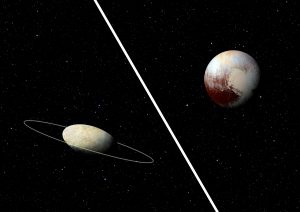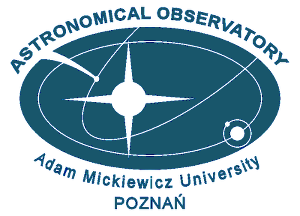The presence of a ring around Haumea, a dwarf planet located beyond Neptune, is reported online this week in Nature. This discovery opens up new avenues of research in the trans-Neptunian region.

Credits: Sylvain Cnudde – SIGAL – LESIA, Observatoire de Paris
Of the four known dwarf planets (Pluto, Eris, Makemake) in the Solar System that orbit the Sun at a greater average distance than does Neptune, Haumea is an unusual, very elongated and fast-rotating body. In contrast to the other dwarf planets, its size, shape, albedo (or reflectance) and density are not well understood. It makes a full rotation around the Sun within 285 years.
Jose Luis Ortiz and colleagues predicted that Haumea would cross paths with the star URAT1 533-182543 and arranged observations from 12 different telescopes at 10 different laboratories on 21 January 2017. Astronomers were able to determine the density, ellipsoidal shape, and albedo of the dwarf planet. They did not detect atmosphere aroud Haumea.
The most surprising discovery was a ring around Haumea that lies in the same plane as its equator and as the orbit of its outer moon, Hi’iaka. The ring has an orbital period that is three times the spin period of Haumea, a radius of about 2,287 kilometres and a width of 70 kilometres. The origin of the ring is unknown.
Participating in this discovery were researchers from our observatory. The group of Anna Marciniak with: Przemysław Bartczak, Toni Santana-Ros, Magda Butkiewicz-Bąk and Grzegorz Dudziński. Their research is founded by European Union’s Horizon 2020 Research and Innovation Programme under Grant Agreement no 687378.
The Nature paper is available here.

